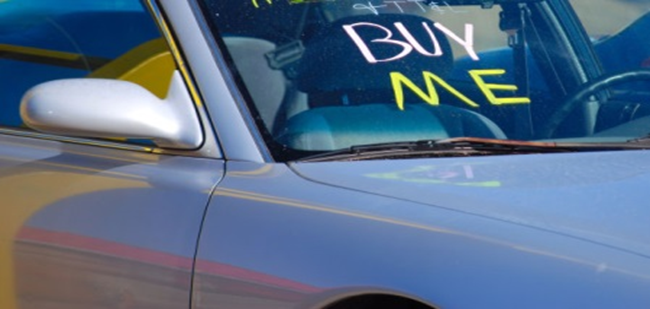Used cars are not brand new cars, buyers must keep this in mind when going for a used car instead of a brand new one. with a flood of used cars hitting the market, analysts expect prices to drop from their unusually high levels seen in recent years, according to The New York Times.
During the recent recession, Americans stopped buying and leasing new cars, opting to hold onto their current vehicles for longer or to buy used cars. That resulted shortages of the most sought-after used cars: Newer models with low mileage. Overall, prices increased 10 percent between 2009 and 2010. Popular used vehicles like the Honda CR-V and Toyota Camry became especially expensive.
Automakers almost completely stopped leasing cars during the financial crisis, because it was incredibly difficult to give out loans. Leased cars have a huge impact on the used car market, because when drivers turn in their leased car after two or three years, the dealers sell those cars at auction. Now we’re starting to see off-lease cars hitting the used car auctions again, The New York Times reported. The Timesreports that prices for used cars between one and three years old are expected to decrease 1.5 percent in 2013 compared with the previous year.
While it’s a much better time to shop for a used car right now than it has been in recent memory, it’s important to keep your wits about you in the face of tantalizing prices by keeping an eye out for serious mechanical or other issues.
We’re big fans of buying used cars. You don’t have the enormous cost of depreciation that you get whenbuying new, since the original owner already took most of that hit. If the car is just a few years old, it will often still be under warranty. Unless the model you’re buying has undergone a significant redesign, a one- to three-year-old used car is often essentially the same as the most recent model year. And, of course, used cars cost less than new cars.
The drop in price for pre-owned cars is great news for shoppers who are in the market, but there are a few dangers that come with buying used. A used car could have been in an accident or recalled and not properly fixed. While the prospect of saving a few thousand dollars on your car purchase by buying used is tempting, don’t let the price override your judgement. We spoke with Stan Markuze, an auto repair expert and founder of PartMyRide.com, to learn what you should make sure to avoid with a used vehicle. Here’s what he said:
1. Electrical problems
Today’s electrical systems in cars are highly complex. This means that when an electrical problem comes up, it can require hours upon hours of work to simply diagnose. Once the problem is pinpointed, replacement components are often pricey to purchase, and even more expensive to install and program. If you notice a stubborn warning light or malfunctioning electrical parts, know that problems can cost thousands of dollars to repair.
2. Poor quality body repair
There are too many shops out there that cut corners or simply aren’t qualified to repair body damage. This will often result in misaligned body panels (inconsistent gaps), mismatched paint and mismatched headlights (one foggy, one clear). If you see shoddy work done to the car’s body, there’s a good chance there’s something wrong underneath, too.
3. High mileage
Over time and mileage, important mechanical parts can wear out and require expensive repair. Cars that have over 100,000 miles will require these repairs much sooner, meaning it is going to cost more to keep on the road. Even high-mileage cars that are advertised as having mostly “freeway miles” will likely have mechanical issues sooner than expected.
4. Rust
If you’re looking at a used car that has been driven in a snow state, make sure to check the edges of the front fenders, the rear wheel wells and door jambs. Rust often starts in these places and can slowly eat away at a car’s metal structure, eventually becoming very expensive to repair.
5. Flood damage
Each time there is a major hurricane in the U.S., thousands of cars are submersed in water, and then recovered. Some of these cars, which are prone to expensive electrical and mechanical problems, are sold to unsuspecting buyers. To determine if a car has been in a flood, first perform a vehicle history check to see if it has been branded by an insurance company or if it was recently registered in a state that had a hurricane or flood. If the history report is clean, check for electrical warning lights on the instrument cluster and for corrosion under the hood. A musty odor can also indicate that a vehicle has spent some time submerged in water.



